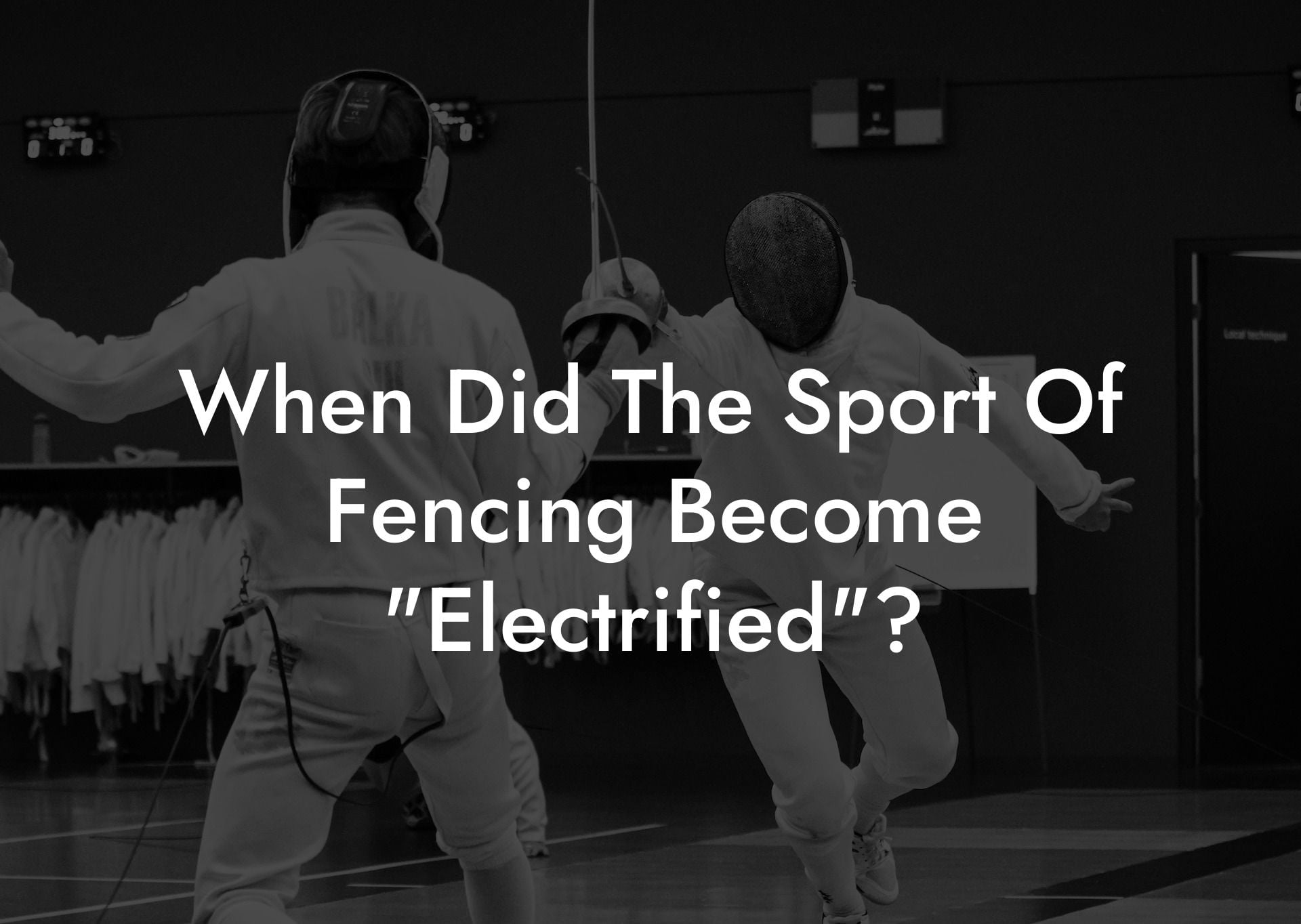Discover the exciting journey of how fencing evolved from a manual sport to an electrified, modern competition. Delve into the history of this electrification and how it revolutionized the sport of fencing, making it an even more thrilling experience for both participants and spectators.
When Did The Sport Of Fencing Become "Electrified" Table of Contents
The Beginnings and the Problem
The Beginnings and the Problem
Fencing has been a popular sport for centuries, tracing its origins back to the Renaissance period in Europe. It was initially developed as a form of swordsmanship used for self-defense and military training. Modern fencing is categorized into three disciplines: foil, epee, and sabre.
In traditional fencing, scoring was done manually, which meant that the referee had to carefully observe each fencer's actions to determine if a hit was made and if it was valid. This subjective scoring system led to numerous disagreements and errors. The sport's governing bodies recognized the need for more accurate and consistent scoring.
The Advent of Electric Fencing
In the early 20th century, inventors began experimenting with ways to automate the scoring process in fencing. Their efforts culminated in the development of the first electrified fencing, which vastly improved the speed and accuracy of scoring in competitions.
Foil
Foil, the first fencing weapon to be electrified, was transformed in the 1930s. The International Fencing Federation (FIE) introduced an electrical apparatus into foil competitions to improve scoring's precision. Electric foil consists of a modified weapon with a button at the tip, connected via wire to a scoring box. When the fencer lands a hit, a circuit is completed, and a signal is sent to the box, registering a point.
Epee
Shortly after foil's electrification, epee followed suit in the late 1930s. The epee's electrical system is similar to the foil, but with several significant differences. Epee does not have the "right of way" rules that apply to foil and sabre, meaning that any hit, whether simultaneous or not, is counted. The electrical system revolutionized epee scoring by providing an accurate means to register double-touches, in which both fencers score a point.
Sabre
The electrification of sabre took much longer to achieve due to the slashing nature of this weapon. It wasn't until 1988 that FIE adopted an electric scoring system for sabre. Sabre required a more complex system, as the entire blade could score a hit, unlike foil and epee with their button-tipped weapon. The solution involved creating a sabre with insulated blade, ensuring that only valid hits would complete the electric circuit.
Impact on Fencing Technique and Popularity
The introduction of electric fencing brought about significant changes in the way fencers approached competitions. The need for exaggerated movements and actions to convince the referee of a hit was no longer necessary. Fencers had to adapt their techniques for faster, more precise actions, making the sport even more dynamic and exciting for viewers.
Since the establishment of electric fencing, the sport has seen increased participation and popularity. Accurate and reliable scoring has made the sport more enjoyable for fencers and spectators alike. It has facilitated the faster growth of fencing globally, making it an integral part of the modern Olympic Games.
When Did The Sport Of Fencing Become "Electrified"? Example:
Imagine a bout between two highly skilled foil fencers in a pre-electrified fencing era. During the match, Fencer A launches an attack and appears to touch Fencer B's torso. However, Fencer B believes that they parried the attack and scored a valid touch instead. The referee must use their best judgment to determine who scored the point— a subjective and sometimes controversial decision.
Fast forward to the electrified fencing era, where both fencers are equipped with electric foil weapons. This time, when Fencer A attacks and Fencer B parries, the scoring system immediately indicates who scored a valid point by lighting up the corresponding color on the scoring box. The electrified sport allows for instantaneous, accurate, and unbiased scoring, leading to a more enjoyable and fair experience for all involved.
Explore the captivating world of electrified fencing and its transformation from a traditional to a modern sport. Share this article with fellow fencing enthusiasts and discover more guides and expertise at Anchorage Fencing Club. Experience the thrill of fencing, armed with the knowledge of its remarkable evolution.













